client: Grand Genève / Projet d’agglomération franco-valdo-genevois
team: Güller Güller architecture urbanism (lead), mrs partner (mobility), HYL / AMT (landscape), CSD / Sofies / Ecotec (sustainable development), Acadie (economic development), Michel Tranda (editorial support), Infras (methodology), Atelier van de Wetering (GIS)
The agglomeration project constitutes a strategic and at the same time operational framework for
an integrated and coordinated development of the cross-border region of Grand Geneva, for a territory
of 2500 km2 and 1.1 million inhabitants, within the next 15-20 years.
The agglomeration project is not just a strategic territorial development plan at the metropolitan scale.
Conceived by the Swiss federal government as an iterative process, the intention of the agglomeration
projects is to overcome fragmented territorial planning and to foster common and coordinated approaches
regarding urban development, mobility and landscape, at the scale of a functional territory.
Every four years, the agglomerations (approximately 40 urban regions in Switzerland) are submitting
their proposals to the federal government for approval. Every proposal consists of a consolidated development
strategy as well as a set of measures (urban and landscape development / infrastructure / mobility offer),
the realisation of which will be co-financed by the federal government via a dedicated fund. The agglomeration
policy of the federal government has been adopted in 2005, and since then three generations of agglomeration
projects have been submitted, in 2007, 2012 and 2016. The fourth generation is due to be submitted in 2021.
Our team has been commissioned the elaboration of the second and third generation of the Geneva agglomeration project.
In order to achieve a coherent approach across cantonal (two Cantons involved in Switzerland: Geneva and Vaud)
and national borders (Switzerland and France), and to foster support and appropriation, the agglomeration project relies
on major participation and concertation processes at the technical and political levels (territorial entities,
subregions and cities / municipalities) as well as with the civil society (agglomeration forum with several thematic
commissions, and open public events).
The second generation of the agglomeration project (2010-2012) put a major focus on structuring the development
in the urban periphery of Geneva. In a preliminary phase (2009-2010), 7 sub-territorial development strategies were elaborated,
amongst which the “cercle de l’innovation” for the airport sector. Within each one of these sub-territorial strategies, the aim was
to test the urban development potentials of the concerned sectors in a coherent way with accessibility schemes
relying mainly on public transport and slow traffic (pedestrian and bicycle), reducing car dependence.
The goal of the overall agglomeration project was then to reassemble the sub-territorial strategies,
(1) to coordinate and prioritize development potentials in order to achieve an overall capacity of +200’000 inhabitants
and +100’000 workplaces across the metropolitan region, (2) to achieve a coherent approach for the whole agglomeration
with respect to urban development, territorial structure (polycentric region) and mobility strategies, and (3) to identify a set
of priority measures to be proposed to the federal government for co-financing. Thus, the main achievements of the second-generation
agglomeration project were a consolidated vision for a polycentric metropolitan region and for the urban structure
of the urban periphery, in a coherent way with the mobility strategies and the preservation and valorisation of the natural
and agricultural landscape.
The third generation of the agglomeration project (2015-2016) extended this vision and completed it with a focus on three elements:
(1) a zoom on urban quality in the main development areas and namely around nodes and corridors of public transport;
(2) a refined approach for the intermediary, seemingly rural parts of the agglomeration; and (3) a focus on the economic
development opportunities for the French territories in the metropolitan region. The vision and strategies of the
second-generation project were thus completed and refined, and the set of measures was updated for the next package
to be proposed to the federal government.
Both the second and third generation agglomeration project were well received by the Swiss federal authorities.
The cost-benefit-ratio of the Grand Geneva project has been considered good to excellent. This has led to a co-financing
share of the federal government for the proposed measures of 40% in the second generation (maximum share possible)
and 35% in the third generation.
 overall strategy
overall strategy




 zoom airport sector
zoom airport sector


 measures
measures

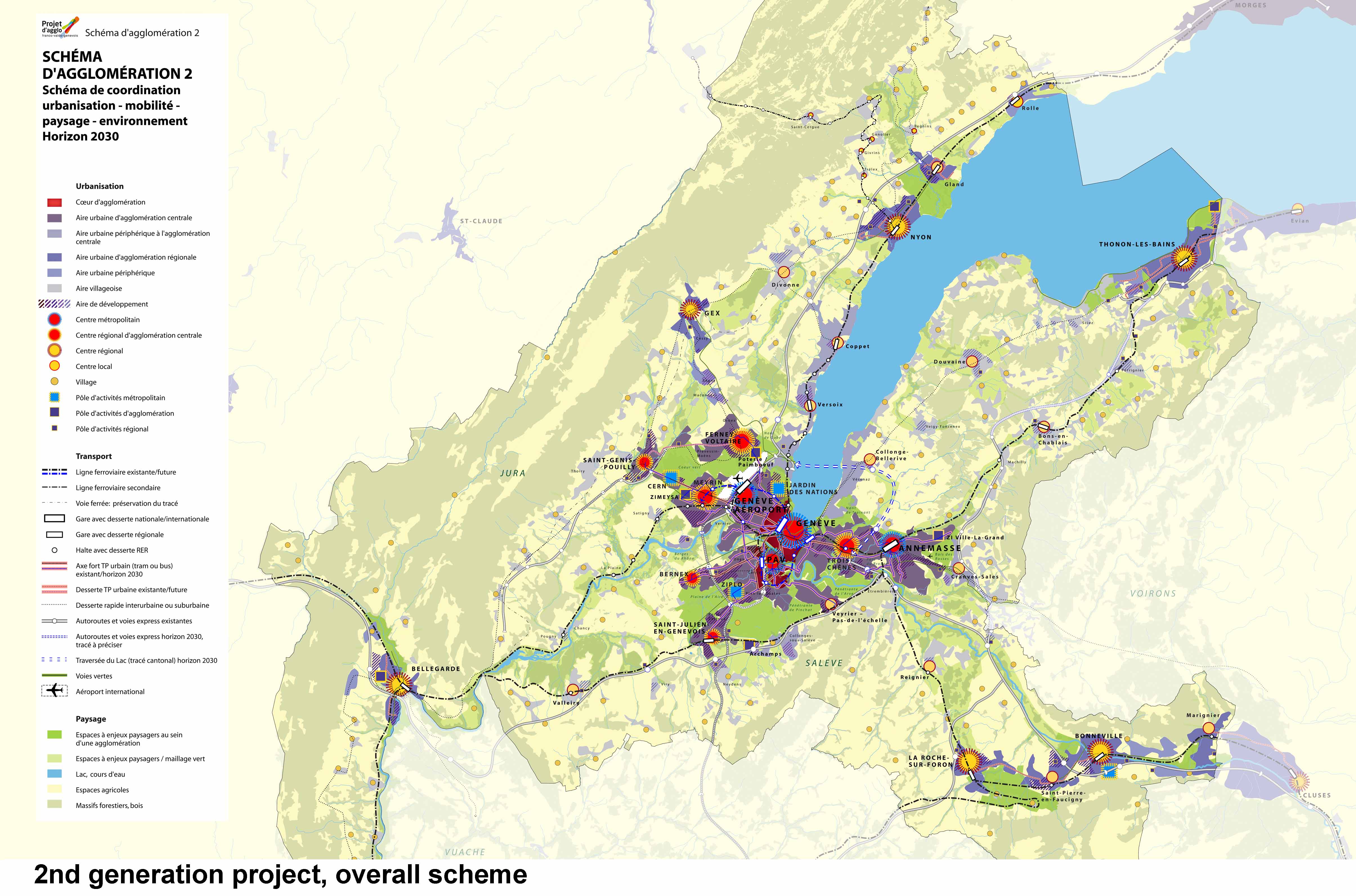
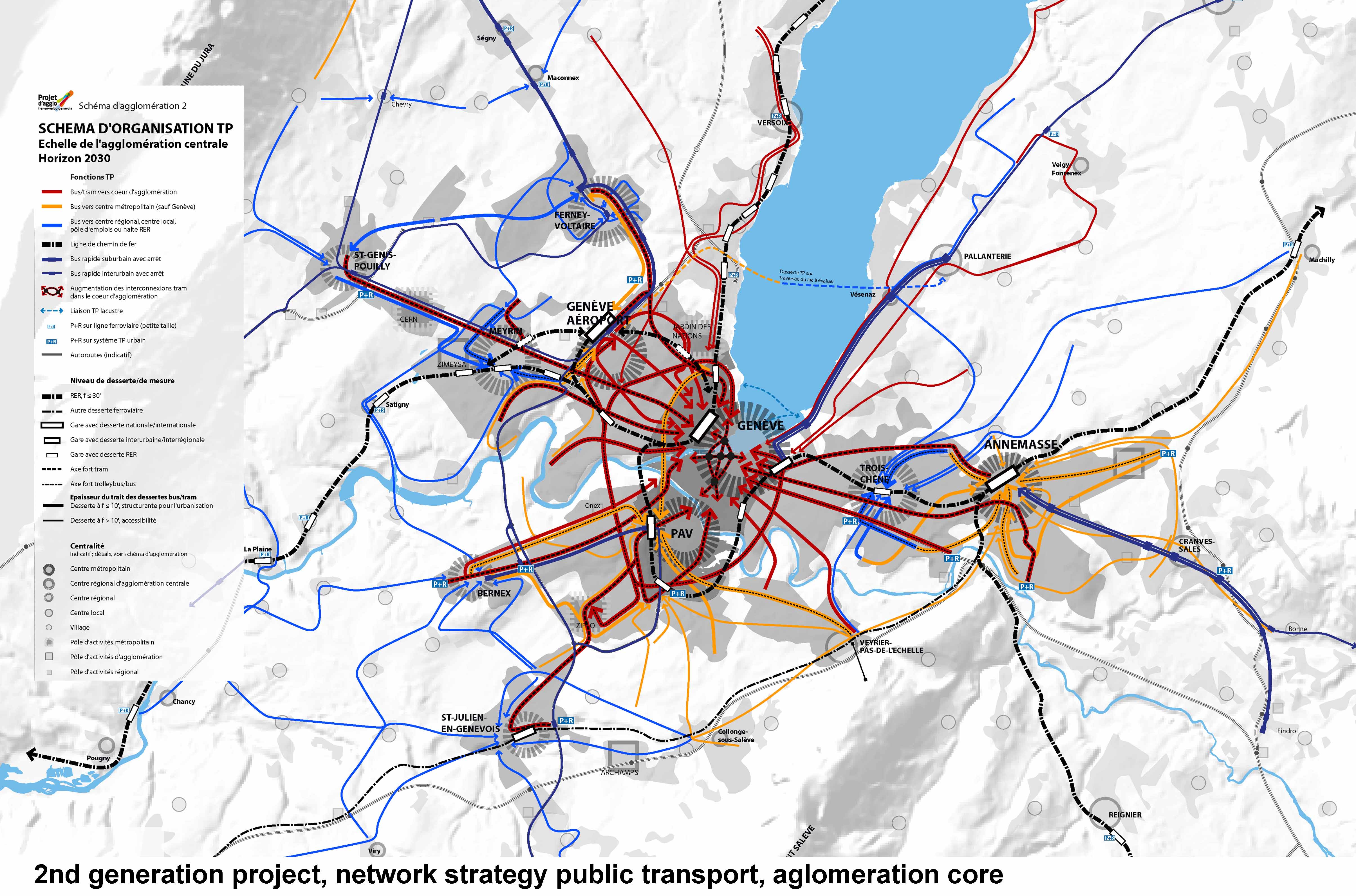
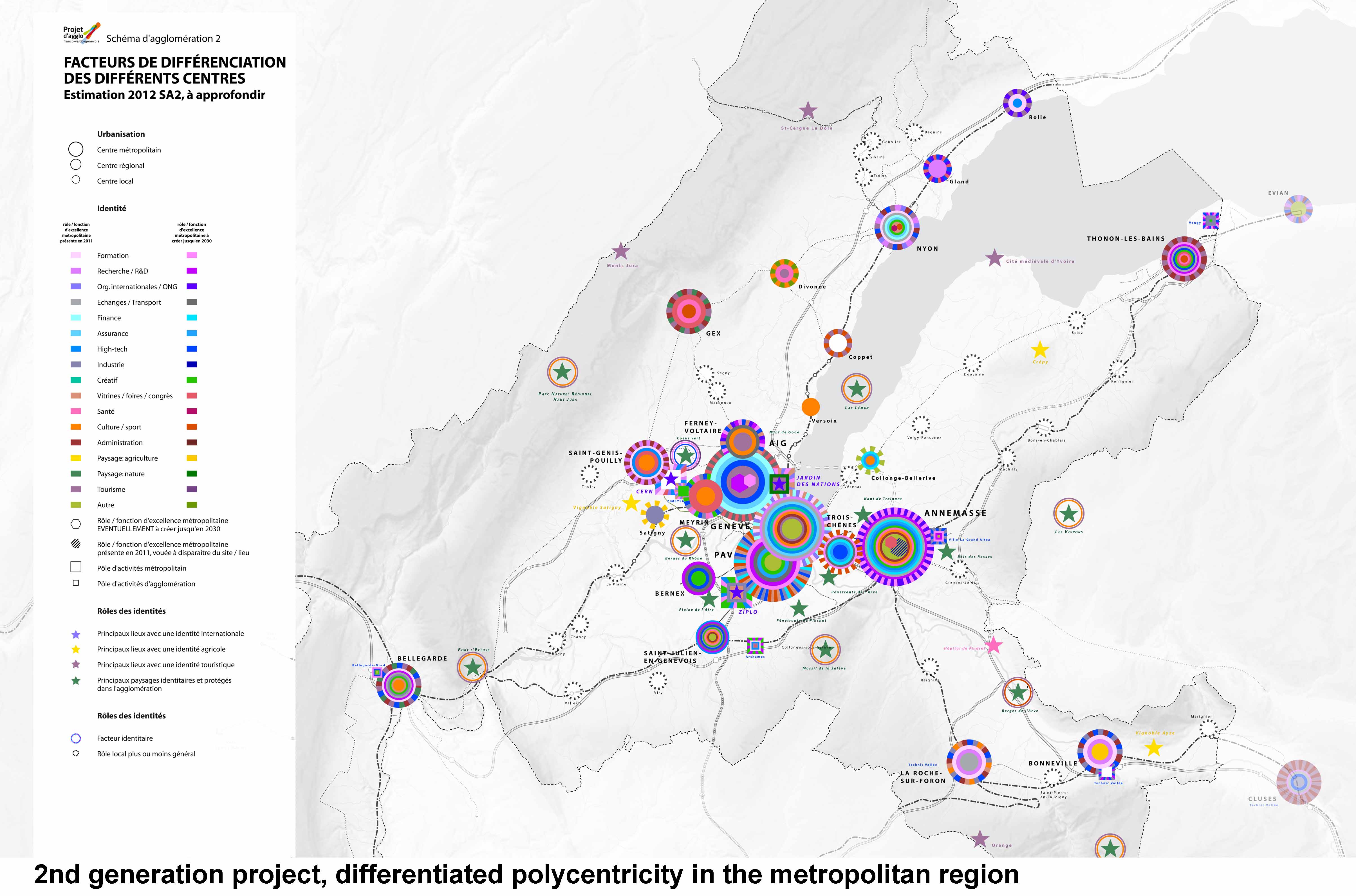
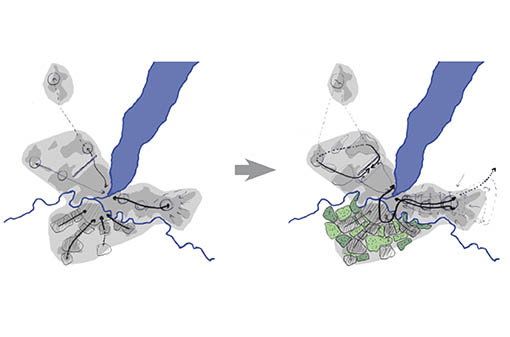

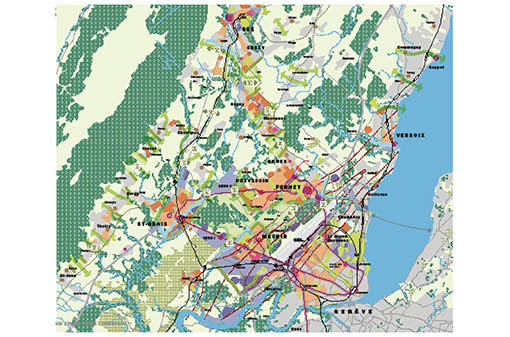
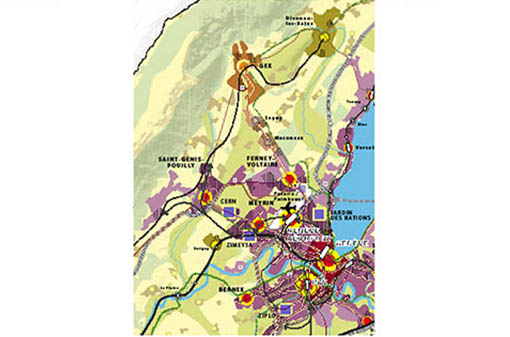
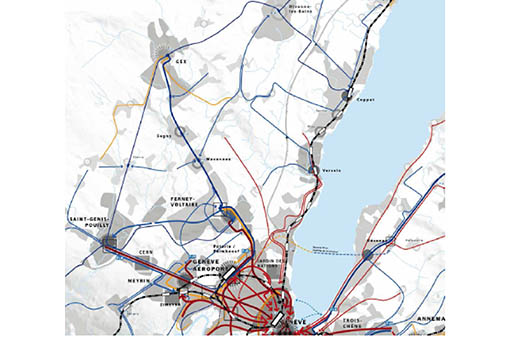

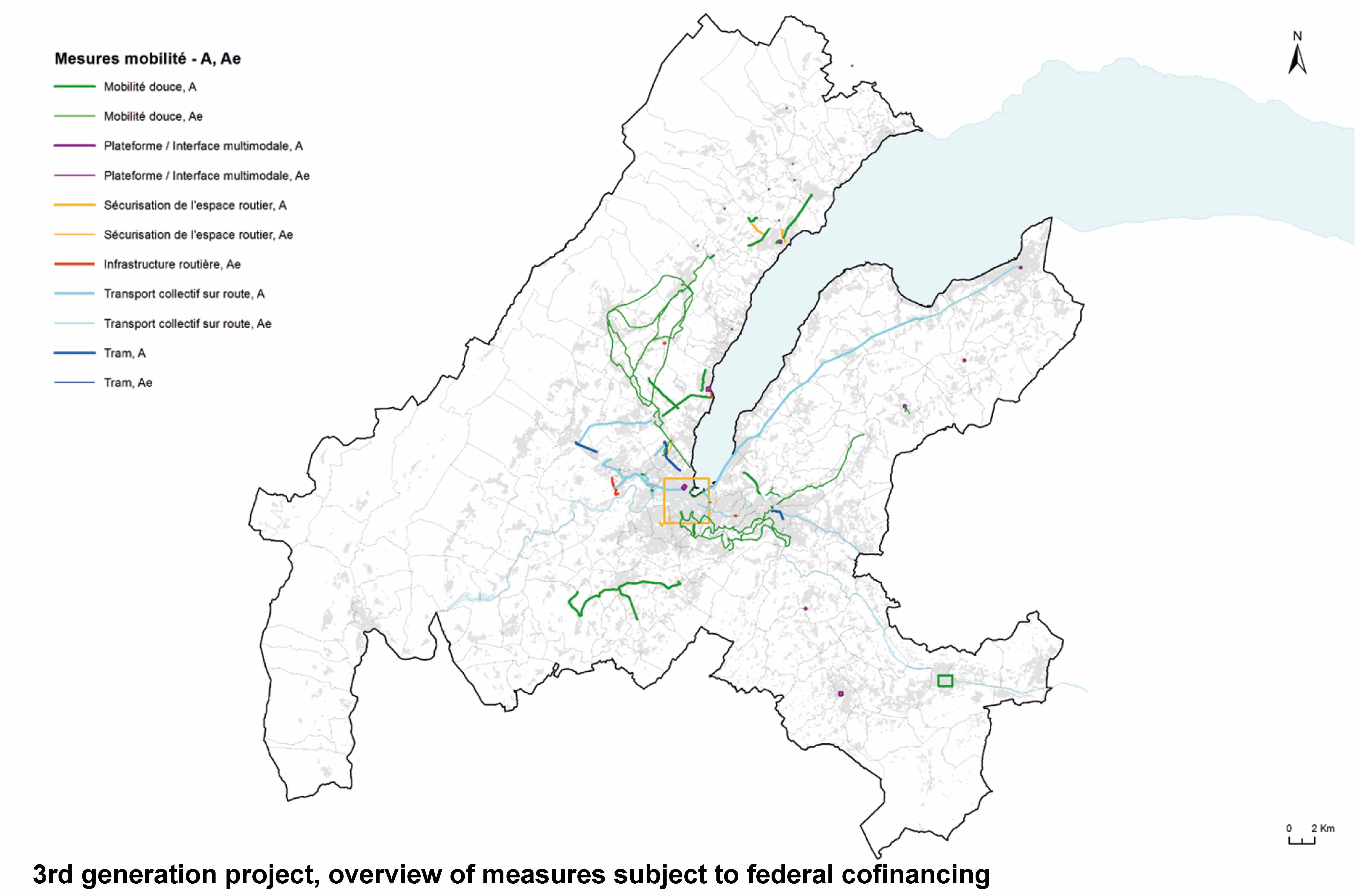
Agglomeration project for the Grand Geneva agglomeration, 2nd and 3rd generation
Geneva, Switzerland
2010-2012 / 2015-2016
“Grand Genève”
“Grand Genève, 3rd generation project 2016”
Grand Genève, 3rd generation project, development strategy
“Grand Genève, 2nd generation project 2012”
Grand Genève, 2nd generation project, development strategy
“Cercle de l’innovation, input for the 2nd generation project”
Geneva, Switzerland
2010-2012 / 2015-2016
“Grand Genève”
“Grand Genève, 3rd generation project 2016”
Grand Genève, 3rd generation project, development strategy
“Grand Genève, 2nd generation project 2012”
Grand Genève, 2nd generation project, development strategy
“Cercle de l’innovation, input for the 2nd generation project”
